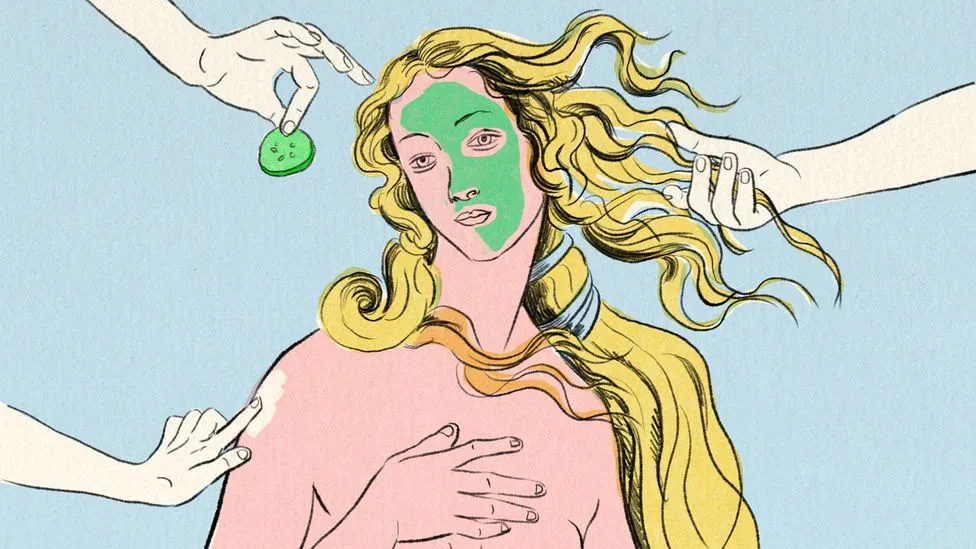The beauty industry is booming with new products and trends. But what does true self-care look like?
Singh’s favourite at-home beauty ritual is slathering on a nourishing face mask. She recommends trying one with ingredients like hydrating shea butter or anti-inflammatory turmeric. Then, take a deep breath and relax while the mask does its work.
African Beauty Rituals
Before the rise of beauty brands that were made in factories, various cultures around the world had their own natural beauty secrets. One of them is the African beauty rituals that are known for their hydrating and nourishing properties. These African beauty secrets have been passed down for centuries.
The continent of Africa has a varied climate of subtropical desert, tropical savanna and lush rain forest. These diverse environments provide a wealth of nutrients to feed the skin and hair.
As a result, the African beauty industry (also called “A-beauty”) is booming as more and more beauty brands introduce their products to the US market. Many of these brands include indigenous and traditional African ingredients such as shea butter, which is often sourced from women-led cooperatives in Uganda and Ghana. Shea butter is a staple in clean beauty formulations because of its ability to nourish and moisturize the skin and hair. It is also said to reduce dark circles under the eyes and support healthy aging.
Asian Beauty Rituals
Asian beauty rituals place a strong emphasis on holistic health and wellness. One example of a simple but powerful skin care ritual comes from Chinese and Japanese women who wash their faces with rice water to tone, cleanse and exfoliate. The Japanese also used jodu (ground mung bean powder that contains naturally-occurring saponins) to scrub away dead skin cells and prevent premature aging.
Like the Egyptians, they used moisturizing emollients to protect their dry desert skin. One of their most effective hair removal methods was sugaring, which involved applying a sweet mixture of sugar and lemon to the hair, letting it set before gently pulling it off.
The Japanese, Chinese and Koreans were also big proponents of double cleansing, using rich camellia oil to dissolve makeup before washing their face with sakura blossom or wakame oil to moisturize the skin. These rituals are still followed today, and are the inspiration behind our customer favorite products like our Nourish Facial Oil & Glow Facial Oil.
Latinx Beauty Rituals
When it comes to beauty, the Latina community embraces a wide range of styles and rituals. Whether it’s hair, skin care or makeup, each Latinx culture has a rich history of beauty practices.
In fact, a lot of the clean girl trends we see in TikTok and on Pinterest have roots in Latinx culture. For example, the slicked-back aesthetic was popularized by Gen Z Internet culture, but it originated among Black and Latinx women who use gels and pomades to lay flat thick, textured hair.
While the Latinx populace is a major consumer of beauty products (Brazil spends the most per capita, followed by Argentina and Chile), we don’t often see those cultures represented in mainstream products. Fortunately, a growing number of Latinx-led brands are making an impact. One such company is Erenzia Beauty, which features ingredients influenced by Latina traditions. The brand also encourages self-care through practices like a bathing ritual called Bano de Flores.
Middle Eastern Beauty Rituals
Aesthetic rituals were a major part of Egyptian life. Pharaohs’ cartonnage masks and wooden coffins often portrayed idealized beauty with smooth skin and kohl-rimmed eyes. Women regularly anointed themselves with emollients and beauty potions, including oils, fruit extracts, and herbal mixtures.
In Morocco, the combination of indigenous Amazigh and Arab cultural influences has yielded creative natural beauty treatments that promote flawless, glowing skin and lustrous hair. A popular Moroccan treatment is the hammam, a steam bath that relaxes muscles and cleanses the skin by dilating pores and exfoliating. It’s also possible to get a head massage or face mask with a mix of clay, rhassoul, mud, salt, and essential oils.
While Eurocentric beauty ideals have facilitated upward social mobility in some Middle Eastern populations, these standards aren’t widely applied across all cultures in the region. Nevertheless, insufficient knowledge about Middle Eastern facial anthropometry may lead practitioners to impose Western beauty ideals and to create aesthetic results that conflict with or contradict ethnic identity and facial features.




